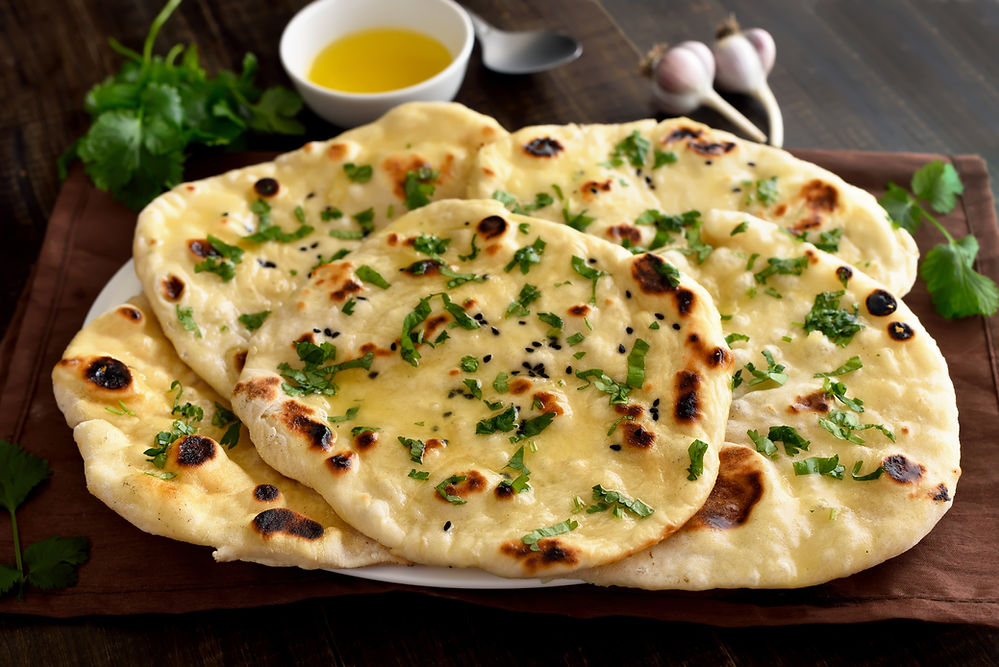Preparing the Dough for the Naan

There’s something truly irresistible about biting into a soft and slightly charred piece of naan, isn’t there? This delectable Indian flatbread has become a staple in cuisines around the world, and the key to its perfection lies in the dough preparation. Whether you’re an amateur home cook or a seasoned chef, mastering the art of preparing naan dough can take your culinary skills to new heights.
Choosing the Right Ingredients: To create the ideal naan dough, start by assembling the right ingredients. You’ll need all-purpose flour, warm water, active dry yeast, a pinch of sugar, salt, plain yogurt, and a touch of oil or ghee. Each ingredient plays a crucial role in ensuring your naan turns out just right.
The Yeast Activation: Begin by activating the yeast. Mix warm water with sugar and sprinkle the yeast over it. Allow it to sit for about 5-10 minutes until the mixture becomes frothy. This step is essential as it ensures your dough rises properly.
Creating the Dough: In a large mixing bowl, combine the flour and salt. Gradually pour in the yeast mixture, yogurt, and a spoonful of oil or ghee. Knead the mixture until it forms a soft and smooth dough. If the dough is too sticky, add a bit more flour; if it’s too dry, sprinkle in a touch of water.
The Resting Period: Cover the dough with a damp cloth and let it rest in a warm, draft-free place for about 1-2 hours. This resting period allows the yeast to work its magic, resulting in a light and airy texture.
Portioning and Rolling: After the dough has doubled in size, gently punch it down to release excess air. Divide it into smaller portions and roll each piece into a ball. On a floured surface, roll out each ball into a thin oval or round shape, paying attention to maintaining an even thickness.
Cooking the Naan: Traditionally, naan is cooked in a tandoor, a clay oven. However, a hot cast-iron skillet or grill pan can produce similar results. Cook each flattened dough round on a hot surface until it puffs up and develops those characteristic golden-brown spots.
In conclusion, the secret to achieving the perfect naan lies in the careful preparation of the dough. With the right ingredients, proper yeast activation, patient resting time, and skilled rolling and cooking, you’ll be well on your way to creating naan that rivals your favorite restaurant’s offerings. So, don your apron and get ready to experience the joy of making this beloved flatbread from scratch. Your taste buds will thank you!
Variations to Try with Naan
Naan, the beloved Indian flatbread, has captured the hearts and palates of food enthusiasts around the globe. Its soft, chewy texture and ability to pair with a myriad of dishes make it a versatile canvas for culinary creativity. While the classic butter naan is a timeless favorite, there’s a world of exciting variations waiting to be discovered. Embark on a culinary adventure and tantalize your taste buds with these delightful naan variations.
Garlic and Herb Naan: Elevate your naan experience by infusing minced garlic and fresh herbs like cilantro or parsley into the dough. The aromatic blend creates a harmonious balance of flavors that pairs perfectly with hearty curries or as a standalone appetizer.
Cheese-Stuffed Naan: For a decadent twist, try stuffing your naan with a generous filling of mozzarella, cheddar, or paneer. The melted cheese oozes out, creating a delightful contrast to the crispy exterior.
Spinach and Feta Naan: Incorporate healthful greens into your naan by mixing finely chopped spinach and crumbled feta cheese into the dough. This vibrant variation is not only visually appealing but also adds a burst of earthy flavors.
Nutty Delight Naan: Add a crunch to your naan by sprinkling a combination of chopped nuts such as almonds, cashews, and pistachios on the surface before baking. The nuts toast as the naan cooks, imparting a delightful nuttiness to every bite.
Sweet Nutella Naan: Indulge your sweet tooth by spreading a layer of Nutella on the naan before folding and toasting. The warm, gooey Nutella combined with the soft naan creates a dessert-like treat that’s perfect for satisfying cravings.
Pesto and Sundried Tomato Naan: Infuse the rich flavors of pesto and tangy sundried tomatoes into your naan for a Mediterranean-inspired twist. This variation is a great accompaniment to salads or a delightful appetizer on its own.
Spicy Jalapeno Naan: For those who crave heat, consider incorporating finely diced jalapenos into the dough. The slight kick of spice adds a bold dimension to the naan, making it a great companion to spicy dishes.
Chocolate Banana Naan: Embrace innovation by spreading a layer of chocolate ganache and sliced bananas onto your naan. When warmed, the chocolate melts and the bananas caramelize, resulting in a dessert naan that’s both comforting and indulgent.
With these inventive variations, naan transforms from a simple accompaniment to a star of the meal. Whether you’re hosting a dinner party or simply exploring new flavors in your kitchen, these naan variations are sure to captivate your taste buds and open the door to a world of culinary possibilities.
Storing Garlic Naan
Garlic naan, with its tantalizing aroma and soft, chewy texture, is a beloved accompaniment to many Indian dishes. Whether you’ve prepared a batch at home or indulged in this delectable treat at a restaurant, there are times when you might find yourself with more garlic naan than you can devour in one sitting. To ensure that none of this culinary masterpiece goes to waste, mastering the art of storing garlic naan is essential.
Storing garlic naan involves a delicate balance between preserving its freshness and retaining its delightful flavors. Firstly, allow the naan to cool to room temperature before attempting to store it. Placing hot naan in an airtight container can create excess moisture and lead to sogginess. Once cooled, wrap the naan in a clean, dry cloth or paper towel. This will help absorb any residual moisture and maintain the naan’s characteristic chewiness.
Airtight containers are the go-to choice for storing garlic naan. These containers shield the naan from exposure to air, which can cause it to dry out or become tough. Place the wrapped naan in the container, ensuring that they are not stacked too closely together. For added protection against moisture, you can place a small piece of parchment paper between each piece of naan.
While garlic naan can be refrigerated, it’s important to consume it within a day or two to prevent it from losing its optimal taste and texture. For longer-term storage, freezing is the key. Individually wrap the naan in plastic wrap and then place it in a resealable freezer bag. Frozen garlic naan can be reheated directly on a stovetop or in an oven, allowing you to relish the same flavors and aromas as freshly made naan. In conclusion, garlic naan is a culinary delight that deserves to be savored even beyond the initial meal. By following the right storage techniques, you can enjoy the same enchanting flavors and textures whenever you crave them. So, whether you’re preparing a feast or ordering takeout, remember that with a little care, your garlic naan can stay as irresistible as ever.
